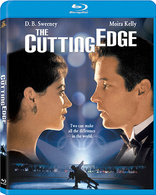The Cutting Edge Blu-ray Movie
HomeThe Cutting Edge Blu-ray Movie 
Metro-Goldwyn-Mayer | 1992 | 101 min | Rated PG | Jan 11, 2011Movie rating
7 | / 10 |
Blu-ray rating
| Users | 3.7 | |
| Reviewer | 3.5 | |
| Overall | 3.7 |
Overview
The Cutting Edge (1992)
An uplifting romantic comedy about two complete opposites who team up for a shot at the Olympic Gold.
Starring: D.B. Sweeney, Moira Kelly, Roy Dotrice, Terry O'Quinn, Dwier BrownDirector: Paul Michael Glaser
| Comedy | Uncertain |
| Romance | Uncertain |
| Sport | Uncertain |
| Drama | Uncertain |
Specifications
Video
Video codec: MPEG-4 AVC
Video resolution: 1080p
Aspect ratio: 1.85:1
Original aspect ratio: 1.85:1
Audio
English: DTS-HD Master Audio 2.0
Spanish: Dolby Digital 2.0
French: Dolby Digital 2.0
Subtitles
English SDH, French, Spanish
Discs
50GB Blu-ray Disc
Single disc (1 BD)
Playback
Region free
Review
Rating summary
| Movie | 4.0 | |
| Video | 3.5 | |
| Audio | 4.0 | |
| Extras | 1.5 | |
| Overall | 3.5 |
The Cutting Edge Blu-ray Movie Review
"Toe pick!"
Reviewed by Michael Reuben May 31, 2011If the words "Toe pick!" mean anything to you, then there's probably nothing I can say about The
Cutting Edge that you don't already know. For years after the film's release, stars Moira Kelly
and D.B Sweeney had the line called out to them in public. It's the perfect catch phrase, because
it encapsulates in two words both the story's setting (competitive figure skating) and its narrative
arc. Brevity is the soul of wit.
On paper, The Cutting Edge sounds like a formulaic romantic comedy, and in many ways it is. Its plot is constructed from familiar elements that, in contemporary Hollywood, generally produce results ranging from soporific to nauseating. Every time I watch the film, I wonder whether it'll have worn out its welcome, but I'm always drawn in, charmed and entertained. The Blu-ray was no exception.
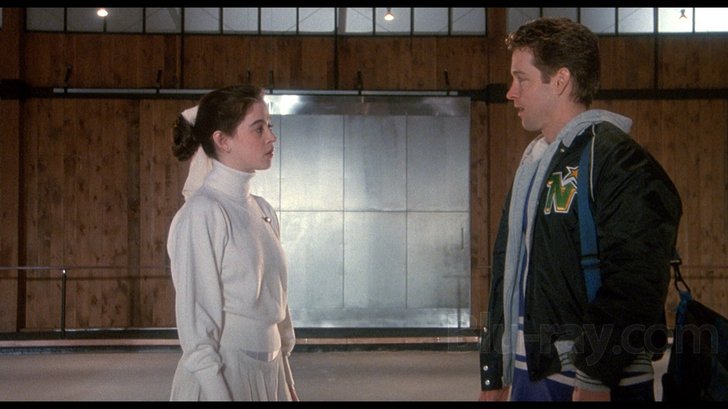
Kate Moseley (Kelly) is the scourge of competitive figure skating. She's talented and driven but impossible to work with, which is a problem for someone whose sport requires a partner. As the film opens, Kate fumbles badly at the 1988 Winter Olympics in Calgary, when she falls during a tricky maneuver. She blames her partner, Brian (Kevin Peeks), and storms off the ice, leaving her wealthy father, Jack (Terry O'Quinn), and her Russian coach, Anton Pamchenko (Ray Dotrice), to pick up the pieces.
Also competing at Calgary is Doug Dorsey (Sweeney), a talented hockey player from Minnesota whose meteoric rise has electrified the sport. But Doug's hockey career ends abruptly when a freak head injury damages his vision just enough to disqualify him from competition. (Listen carefully to the doctor who delivers the bad news; the voice belongs to Michael Hogan, who would later distinguish himself as Battlestar Galactica's tormented Colonel Saul Tigh.) Doug retires to his Minnesota hometown, working construction and sometimes helping out at his brother's bar, appropriately called Dorsey's Penalty Box, bedeviled by dreams of what might have been.
Two years later Pamchenko arrives with a strange offer. Would Doug be willing to try on a pair of figure skates? For a guy of Doug's background, the offer is about as attractive as donning a pink tutu, but no one else is willing to put him back on the ice. So, too embarrassed to tell anyone at home where he's going (he makes up a story about the merchant marine), Doug treks to the Moseley complex in Greenwich, Connecticut, where Kate has been chewing up and spitting out one prospective partner after another. Opposites clash, sparks fly and two tenacious competitors bring out the best in each other. A partnership is born.
The remainder of the film is ostensibly about Kate's and Doug's effort to win the figure skating Gold Medal at the 1992 Winter Olympics in Albertville, France. But it's really about their reaching the destination that the audience expects and wants them to reach, which is true love. The rules of the genre require obstacles, and Tony Gilroy's script provides plenty of them. There are numerous skating competitors, among them Kate's former partner, Brian, now squiring the improbably named Lorie Peckarovski (Rachelle Ottley), who immediately makes a play for Doug. There's Kate's own boyfriend, Hale (Dwier Brown), a suitably proper but bland businessman who works for her father in "currency arbitrage" and is conveniently out of town most of the time. ("Bet you look pretty good from a few thousand miles away", Doug taunts.) Then there's Doug's inability to resist the favors of a certain kind of woman (like Lorie) who loves to flirt (and more) with jocks; Doug may not take these flings seriously, but they don't win him any points with the partner for whom he's shocked to find he has real feelings.
Then, of course, there's the constant battling between Kate and Doug every day during practice and over every aspect of their skating routine, including the costumes and music. "Are they gonna get it?" Jack asks Pamchenko about a difficult move. "Eventually", says the coach. "Before they kill each other?" Jack replies - and he isn't kidding.
It's almost impossible to explain why one genre film works and another doesn't, but one can point to several elements in The Cutting Edge that help explain its enduring appeal. It was the first produced script by Tony Gilroy, who would go on to prove his mettle with such varied fare as The Devil's Advocate, the three Bourne films and Michael Clayton, which he also directed. Gilroy writes sharp dialogue, and The Cutting Edge has many examples, but he also understands how to express character through action, as befits both a visual medium and a story about athletes. Gilroy's touch is recognizable in such sequences as the post-victory celebration where Doug teaches Kate how to drink tequila shots. It has almost no dialogue, but you can see their relationship changing.
Director Paul Michael Glaser did The Cutting Edge as a follow-up to 1987's The Running Man, and while the man best known as one half of Starsky and Hutch may seem an unlikely candidate to helm a romantic comedy, Glaser turned out to be ideal for a story in which the leading pair spends most of the film's running time hiding their feelings from each other. He'd played something similar on TV; what was Starsky and Hutch but a bromance with guns and a Gran Torino? And having cut his teeth as a television director, Glaser understood how to keep the action lively and clear and the story moving along.
Finally, there's the cast. Kelly and Sweeney are fine actors, but they're neither household names, nor are they movie stars. As a result, they don't bring major baggage to the roles of Kate and Doug, and we slip right past them into the characters and the intense energy that their competitive spirits generate. One of Hollywood's recurrent mistakes is trying to get us to buy anew the same familiar stars as romantically challenged people, whether it's Jennifer Aniston or Julia Roberts. The star system might have worked in Hollywood's golden era, but today the most effective romantic comedies feature one or more leads who aren't yet stars (though they may later become one): Pretty Woman, Working Girl, The Princess Bride, When Harry Met Sally.
It also never hurts to have strong supporting players. Terry O'Quinn wasn't as famous as he later became on Lost, but he'd already proven himself an accomplished actor in The Stepfather. With limited screen time, O'Quinn gives Jack Moseley a sense of a conflicted inner life far beyond what must have appeared on the page. It would have been easy to play Jack as the villain of the piece, but O'Quinn created someone more human, interesting and real. Still, the film's secret weapon is that wily scene-stealer, Ray Dotrice. Best known to movie audiences as Mozart's father in Amadeus, Dotrice is a theater veteran who joyously raps his tongue around Anton Pamchenko's thick Russian accent and squeezes out every possible drop of comic relief. When Doug almost walks out of his first meeting with Kate, Dotrice gives him the full Pamchenko treatment: "And where are you going? Ohh, back to Sibeeria? Skating on small pond is beeg excitement, eh? Believe me, Gr-r-etzky, I am last person who is coming to look for you." It's funny, threatening and oddly endearing at the same time. Together, these two father figures, Jack and Pamchenko, form a protective ring around the film's two leads, so that they can safely bounce each other off the ropes until, by the end, they've landed in each other's arms.
The Cutting Edge Blu-ray Movie, Video Quality 
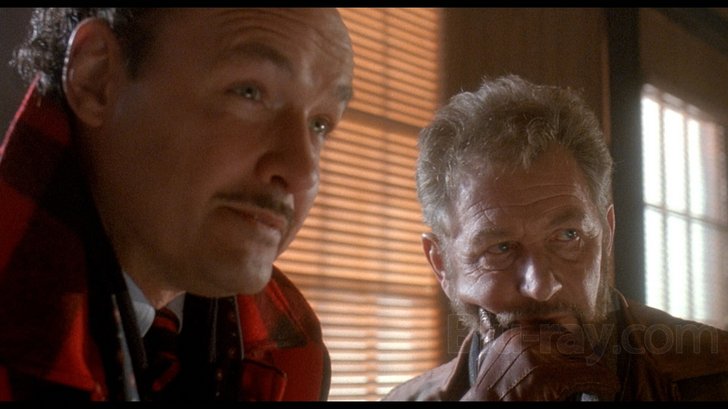
The AVC-encoded transfer of The Cutting Edge is generally quite good, with some limitations
that are inherent to the source. Many of the skating sequences were shot with diffusion or other
lighting effects designed to disguise the frequent editing transitions between the actors and their
skating doubles. It is a tribute to the Blu-ray's resolution (though perhaps not always a benefit to
the viewer) that some of these transitions can now be easily spotted at points where earlier home
video presentations of The Cutting Edge concealed them.
Detail is generally good, but this is not, and never has been, a razor-sharp image. Black levels are
acceptable but not exceptional; there is some indication of crushing in darker scenes, but here
again this appears to be source-based. Numerous scenes feature a visible layer of what some
would call "grain" and others would call "video noise". The reality is probably somewhere in
between, but the important point is that no one has taken a DNR sledgehammer to this transfer -
and this being a Fox catalogue title, we can only be grateful.
Most of the film's scenes favor a color palette dominated by whites and blues, as befits a story
set in wintry seasons and locations. (The film was shot in Canada.) These serve to heighten the
contrast of warmer-hued locales like the interior at Dorsey's Penalty Box, the bar owned by
Doug's brother, or the Chicago nightclub where Kate and Doug go to celebrate after a
tournament. They also accentuate the pageantry of the tournament regalia, with its elaborate
costumes and vividly attired crowds. The Blu-ray's transfer does these color shifts full justice.
The Cutting Edge Blu-ray Movie, Audio Quality 
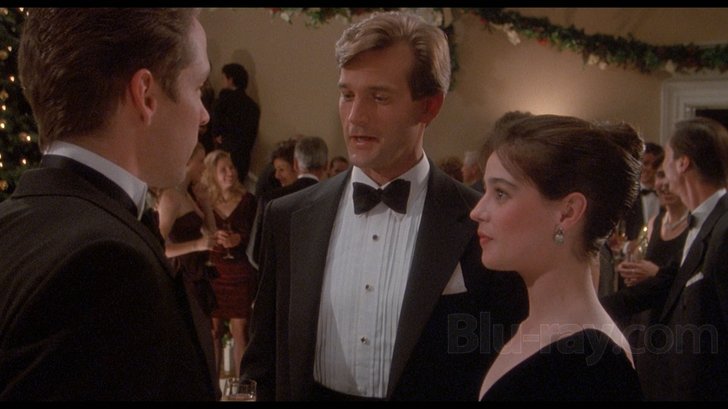
Three cheers for leaving well enough alone! The Cutting Edge was released in stereo surround, and that's exactly what we get on the DTS lossless track. It's an effective mix, with clear dialogue, a few nice surround effects (dozens of camera shutters clicking, sparklers at a New Year's Eve party), and a punchy, if somewhat dated soundtrack, that manages to keep all those training and workout montages from becoming the cliche they should be. Why pull apart something that already works so well just to be able to slap a "5.1" moniker on the box?
The Cutting Edge Blu-ray Movie, Special Features and Extras 
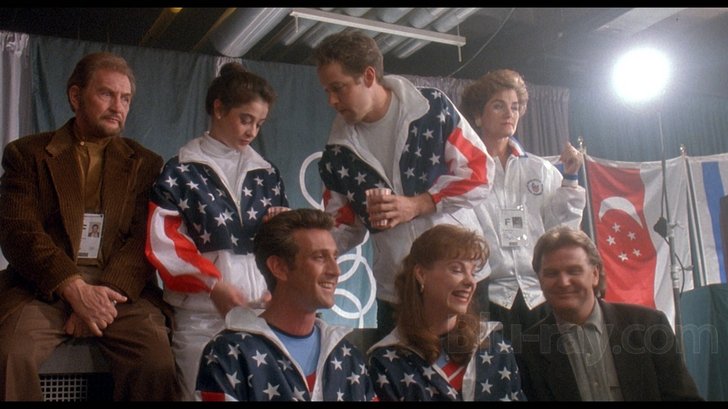
Before listing specific special features, I want to note some oddities in the mastering, which
appear to be a new standard for Fox's MGM discs. First of all, there is no main menu. The disc
goes directly from loading to playback. During playback, the pop-up menu contains an option for
"pause" but none for "menu", and any attempt to access a "top menu" produces an error message.
After the film finishes, it simply starts playing again from the beginning. This arrangement is a
huge inconvenience for playing extras.
Despite the "bare bones" menu structure, Fox has nevertheless mastered the disc with BD-Java,
which wouldn't matter so much except that the ability to set bookmarks has been omitted. No
BDJ-encoded disc should ever lack this capability. BDJ prevents the user from stopping
playback and starting from the same position, and bookmarking is the only workaround. Its
omission is inexcusable.
- The Cutting Edge: Reflections from the Ice (SD; 1.85:1, non-enhanced; 10:53): Made in 2006, this retrospective featurette consists of comments from Sweeney and Kelly edited together, after they were interviewed separately. The two actors share vivid and entertaining memories of working on the film, and they agree that the three months they spent training together in skates were invaluable in developing the credibility of the relationship that they portrayed on screen. They also touch on the filming techniques that had to be improvised for capturing scenes of skaters interacting in close-up, and the few shots that are included of the crew at work are enough to make one yearn for a commentary by director Glaser on his shooting techniques.
- Trailer (SD; 1.85:1, enhanced; 2:04).
The Cutting Edge Blu-ray Movie, Overall Score and Recommendation 
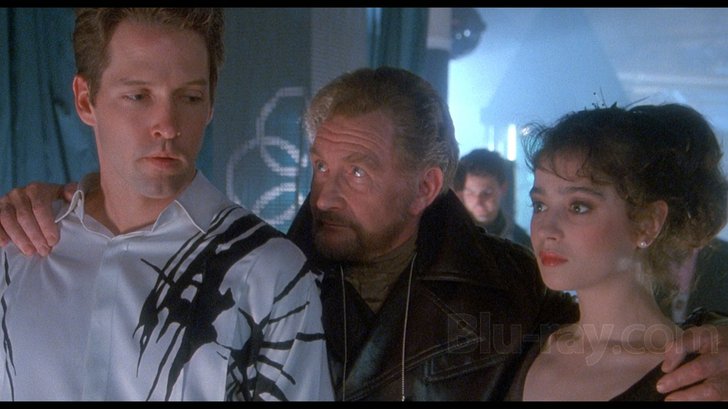
It's a shame there isn't at least a director's commentary, or even a full-length commentary with
Kelly and Sweeney (who are obviously still friends and enjoy talking about the film). Still, aside
from the scant special features, there is little to fault in the Blu-ray presentation of The Cutting
Edge. If you're a fan of the film, you won't be disappointed.
Similar titles
Similar titles you might also like

13 Going on 30
2004

How Do You Know
2010

The Devil Wears Prada
10th Anniversary Edition
2006

Sweet Home Alabama
10th Anniversary Edition
2002

Chalet Girl
2011

Life as We Know It
2010

Mrs. Winterbourne
1996

Paradise
Lamb of God
2013

Second Act
2018

The Proposal
2009

Happy Gilmore 4K
1996

What to Expect When You're Expecting
2012

The Family Man
2000

Fools Rush In
1997

Steel Magnolias 4K
35th Anniversary
1989

Ever After: A Cinderella Story
1998

Catch and Release
2006

Kate & Leopold
The Director's Cut
2001

Fever Pitch
2005

He's Just Not That Into You
2009
